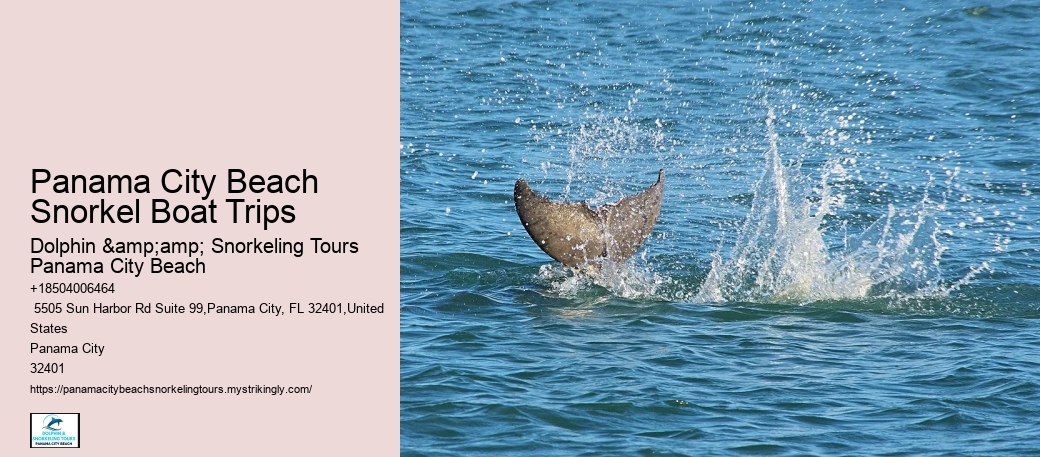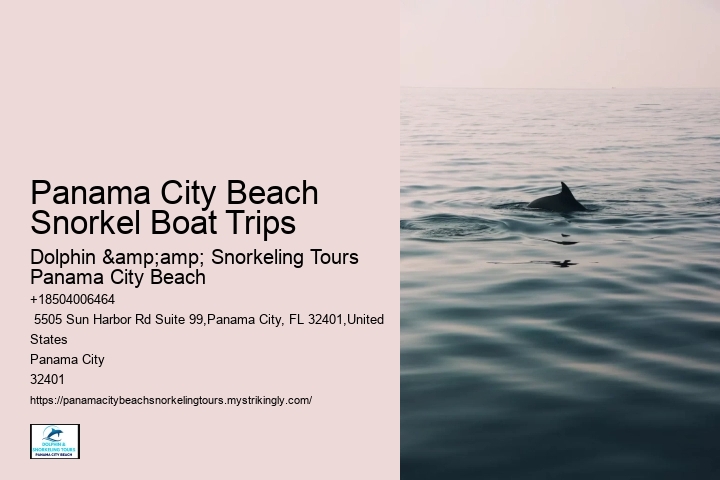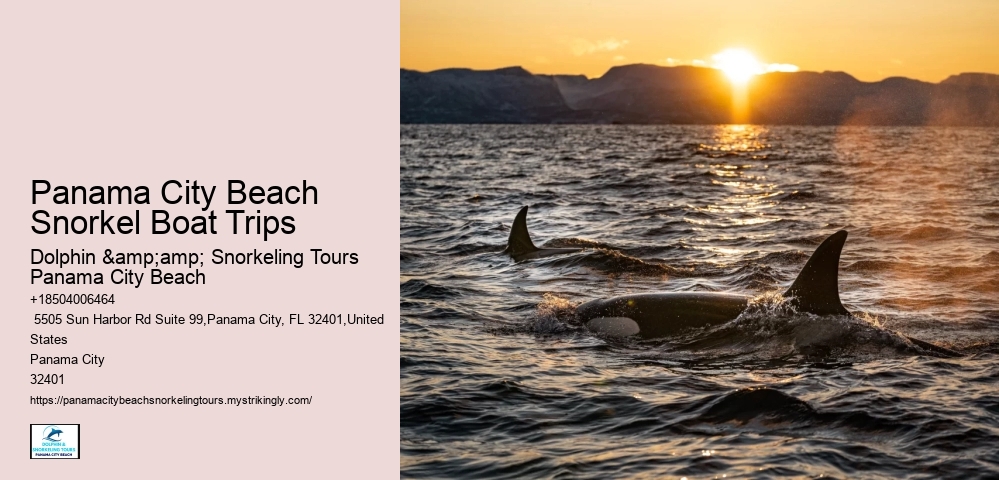

Panama City Beach Pier is the best spot to visit in Panama City Beach, for its crystal-clear blue water. This beach is eight miles long. It is a popular spot for relaxation and play in the sand, followed by a quick bite at one of the nearby waterfront eateries.
Contrasting colors and patterns are what they prefer, so it is a good idea to avoid snorkeling with sharks. Bright colors and patterns can be helpful in an emergency, however.
Dolphin and Snorkel Tours are a three hour excursion packed with dolphins and snorkeling. They offer guests a tour of Shell Island and St. Andrews Bay and ample time to snorkel. Private tours available.
Dive into the heart of the Gulf Coast's underwater paradise with Snorkeling Adventures Around Panama City Beach This is your gateway to exploring the shimmering, clear waters that are a playground for a dazzling array of marine life, including vibrant coral reefs, friendly dolphins, and schools of colorful fish. Whether you're a novice or an experienced snorkeler, these tours offer a seamless experience with expert guides, quality equipment, and personalized attention to ensure your adventure is both safe and memorable. Don't miss the opportunity to immerse yourself in the natural beauty of Panama City Beach. Book your snorkeling tour today and prepare to be amazed by the wonders beneath the waves..Panama City Beach water refers to fresh water that comes from spring-fed bodies of water. It is a water pipe that runs beneath Front Beach Road, and flows towards the Gulf of Mexico. According to the city's website, "These discolored outflows represent a unique aspect in our lake ecosystem."
Captain Croix was extraordinary.
The waters surrounding Shell Island and St. Andrews State Park offer the best snorkeling opportunities in Panama City Beach. Panama City Snorkeling Tours provides access to this undeveloped barrier island of 700 acres that measures 7 miles in length and allows marine life to thrive.
Top 10 Best Snorkeling Beaches Maldives, Indian Ocean. The Maldives, a nation made up of many islands that span the Indian Ocean, is home to over 2,000 people. ... Pink Beach, Komodo. ...
You can spot small marine creatures such as crabs and tropical fish by exploring along the jetty. Some people are lucky enough to see a bottlenose dolphin or a sea turtle. You can swim from Shell Island to St. Andrew Bay by swimming along the inland side. This will allow you to cross shallow seagrass flats and enter a completely new marine biosystem.
1. Camp Helen State Park Beach -- Panama City Beach. Camp Helen State Park Beach is a popular and beautiful beach in Panama City Beach.


You can book a tour online through our easy calendar, or by calling us. Ask us about renting an underwater camera for your adventure.
This was the highlight of our Florida vacation. We felt secure, enjoyed our trip, and also learned a lot. Community Captain Lorraine was kind, knowledgeable, and accommodating.
The Shuttle will drop you off at the “children’s pool” as the calm, sheltered waters behind the Shell Island Jetty are called. This is the perfect spot for beginners to get the feel of snorkeling and it is also a great place to start a snorkel safari.
If you want to try snorkeling in Panama City Beach, the waters around Shell Island and St. Andrews State Park are some of the best. Panama City Snorkeling Tours gives you access to this 7-mile long, 700-acre undeveloped barrier island where the land and water are in a natural and unspoiled condition that allows marine life to flourish.
Panama City Snorkeling Tourso ffer smaller crowds with only six passengers or less, for a more quaint and private tour. Our experienced Captain and Crew will share some fascinating and fun facts about these beautiful creatures.
Snorkeling means swimming across the surface water with a snorkel, dive mask, and fins. Tours The snorkel lets you see clearly under water, while the mask allows you the freedom to breathe underwater. It is much more relaxing than swimming, as you are able to relax and move freely while snorkeling. All equipment for snorkeling is included on a Shell Island Shuttle snorkel excursion.

There is an underwater world just beyond the calm waters of Panama City Beach. Snorkeling can be enjoyed by the entire family. You can rent or buy snorkel gear at your local outfitter, and then go for a photo-worthy dive in a bay, artificial reef or the Gulf of Mexico. You can snorkel alone or with a professional guide. Add a dolphin tour on to your excursion. This is all you need to know about snorkeling on the PCB.
The Shuttle will take you to the "children’s Pool", the calm, safe waters behind Shell Island Jetty.
"This was the highlight of our Florida trip. We felt safe and enjoyed our time. Captain Lorraine was knowledgeable, friendly and accommodating.
"This was the highlight our Florida trip. We felt safe, had fun, and also learned some new things. Campaign Captain Lorraine was friendly, knowledgeable, and accommodating."
Discover some of the most secluded snorkeling sites and beaches in Florida! Adventures departing from Mexico Beach and Port St. Joe.
1. Camp Helen State Park Beach -- Panama City Beach. Turquoise Camp Helen State Park Beach is a popular and beautiful beach in Panama City Beach.
When answering the question "How far can they swim out to the ocean", consider how far they are being pulled by currents. They can travel approximately 48km or 30 miles on average.
Snorkeling in the Jetties A popular spot is the "children’s pool", which is how locals refer the calm, protected waters behind Shell Island Jetty. The protected swimming area at the southern end St. Andrews State Park is another good spot.
Clear Water, Best Beaches of Florida - Gulf Coast Siesta Key. Siesta Key, an island measuring 8 miles long and located off the coast from Sarasota, is called "The Key". ... Honeymoon Island State Park. ... Caladesi Island. ... Sanibel Island. ... North Captiva Island. ... Fort De Soto State Park. ... Marco Island. ... Anna Maria Island.
Panama City Beach Beach is a paradise for snorkelers and scuba divers alike. The gulf has hundreds of dive spots. These include small coral reefs, large ships and other vessels that were built for divers' expeditions or fish habitats.